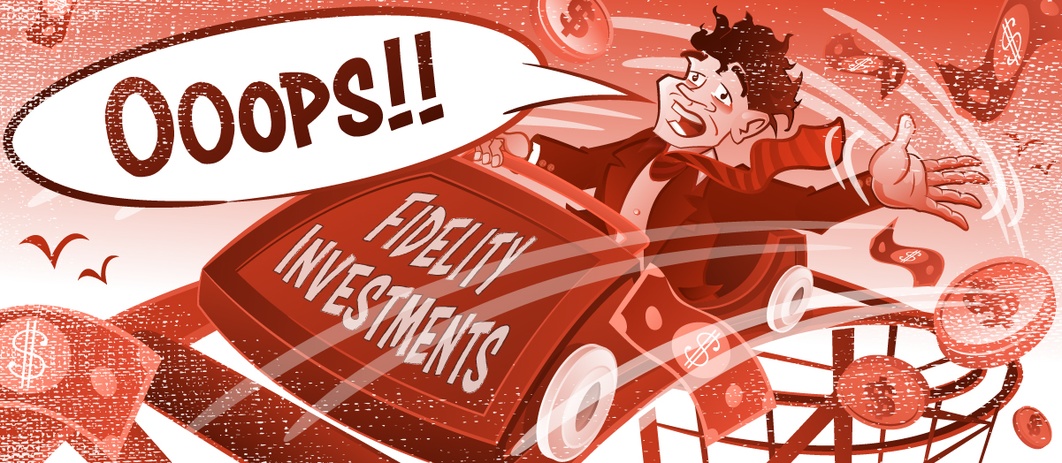
Andrew Hallam
13.07.2020
One of the World’s Best Performing Portfolios During COVID-19
_
This year has been a fast, rickety roller coaster ride for stocks. COVID-19 nibbles at the track as investors fly up and down. Plenty of people can’t handle this sort of fear. They understand that stocks rise and fall. But they don’t have the stomach for the biggest market drops.
To them, COVID-19 is a risk to their investments. But the far bigger risk is in the mirror every day. If they sell when stocks are low, they could miss future gains.
Fidelity Investments is one of the world’s biggest mutual fund companies. They reported that almost 20 percent of their investors pulled out of the stock market between February 20th and May 15th, 2020. What’s worse, almost one-third of the firm’s investors over the age of 65 did the same thing. The roller coaster might be scary. But these people panicked and dove off the flying track. Today, they’re saying, “Oops.” From March 23, 2020 to July 2, 2020, global stocks gained 39 percent.
Smart investing is simple. Build a diversified portfolio of low-cost ETFs. Resist the urge to tinker. Ignore stock market forecasts and continue to add money. When you retire, sell an inflation-adjusted 4 percent per year.
But that’s easier said than done. Investors often panic when stocks hit the skids. If this sounds like you, The Permanent Portfolio might be your savior. It combines short-term bonds (or cash), long-term bonds, stocks and gold in equal proportions. Last year, I wrote about it, offering ETF models that investors could buy. You could build such a portfolio. It would take less than an hour a year of your time.
If you’re curious about how it performed during 2020 so far, the classic Permanent Portfolio gained 9.65 percent from January 2020 to June 30, 2020. That compares to a drop of 3.44 percent for U.S. stocks and a drop of 6.83 percent for global stocks.
Back-tested to 1971, the Permanent Portfolio’s worst year saw a drop of about 5 percent, in 1981. During the financial crisis of 2008, it dropped less than 1 percent. From January 1978 to June 30, 2020, it averaged a compound annual return of 8.42 percent per year.
That didn’t beat a portfolio devoted 100 percent to U.S. stocks. Nor did it beat a portfolio comprising 60 percent stocks, 40 percent bonds. But it wasn’t far behind. And here’s an important part. How a specific combination of assets performs in the future might not really matter. What’s more important is how your money performs. It’s not the same thing.
For example, when markets are rising, it’s easy to stick to a long-term plan. But during market crashes, we often leap off roller coasters. Consider Vanguard’s S&P 500 index. It averaged a compound annual return of 6.89 percent between March 31, 2006 and March 31, 2016. Most investors, however, panicked during the financial crisis of 2008/2009. According to Morningstar’s cash-flow analysis, the average investor in Vanguard’s S&P 500 index averaged just 4.52 percent over that same time period. In other words, their fear cost them 2.37 percent per year. That might not sound like much, but the long-term impact could be huge.
Imagine two brothers. Steely-eyed Joe doesn’t fear market crashes. His temperament is perfect for investing. Assume a globally diversified portfolio of ETFs averaged 6.89 percent over the next 30 years. Joe invests $1000 a month. After three decades, he earns 6.89 percent per year. His consistent commitment would build him a portfolio worth $1,187,912 after 30 years.
His brother, Tommy, however, is more like the average Joe. Tommy worries about market movements. He listens to forecasts. He concerns himself with how COVID-19 might affect his portfolio. Unfortunately, he acts on fear and predictions.
Tommy is normal. But Tommy’s normality would cost him plenty. If he invested $1000 for 30 years, and if he averaged 2.37 percent less than his brother Joe, he would end up with $767,773. That’s a lot less than Joe’s $1.18 million.
If you have Zen-like control of your emotions, you should be able to ignore market news and forecasts. In that case, build a globally diversified portfolio of ETFs that suits your tolerance for risk.
But if you look in the mirror, and fear stares back, the Permanent Portfolio might help you sleep at night. This doesn’t mean, however, you should select the Permanent Portfolio when things look scary, then jump into something more conventional when markets calm down.
Plenty of investors do that…they always have. As a result, they end up buying high, selling low, and hurting their long-term profits. If the Permanent Portfolio suits your personality, follow it for a lifetime. Don’t ever tempt yourself to jump off the tracks.
Andrew Hallam is a Digital Nomad. He’s the author of the bestseller, Millionaire Teacher and Millionaire Expat: How To Build Wealth Living Overseas
Swissquote Bank Europe S.A. accepts no responsibility for the content of this report and makes no warranty as to its accuracy of completeness. This report is not intended to be financial advice, or a recommendation for any investment or investment strategy. The information is prepared for general information only, and as such, the specific needs, investment objectives or financial situation of any particular user have not been taken into consideration. Opinions expressed are those of the author, not Swissquote Bank Europe and Swissquote Bank Europe accepts no liability for any loss caused by the use of this information. This report contains information produced by a third party that has been remunerated by Swissquote Bank Europe.
Please note the value of investments can go down as well as up, and you may not get back all the money that you invest. Past performance is no guarantee of future results.
